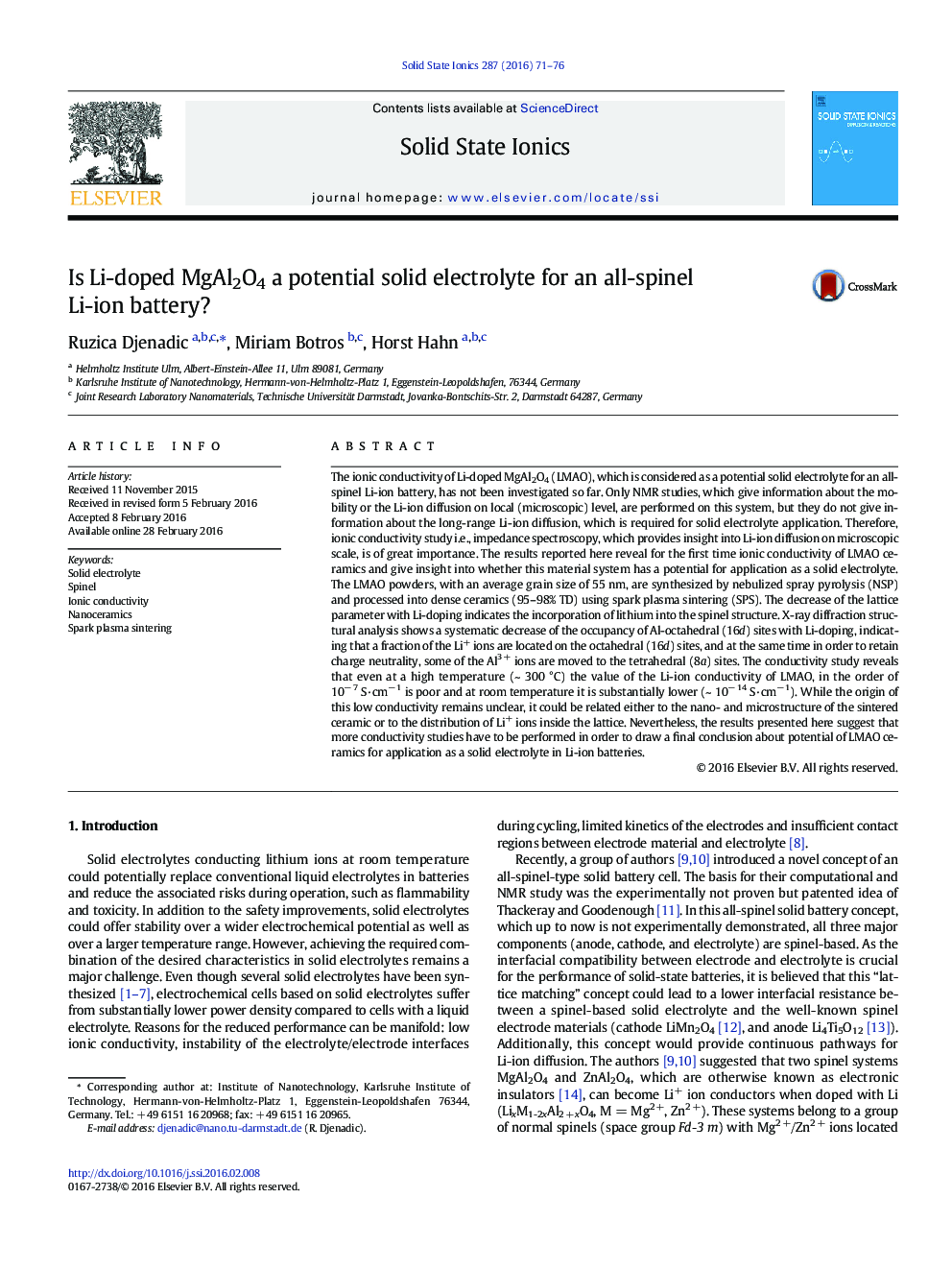| کد مقاله | کد نشریه | سال انتشار | مقاله انگلیسی | نسخه تمام متن |
|---|---|---|---|---|
| 1293340 | 1498256 | 2016 | 6 صفحه PDF | دانلود رایگان |

• Potential of Li-doped MgAl2O4 for application as a solid electrolyte is studied.
• Ultra-fine grained ceramics is prepared by spark plasma sintering.
• Crystal structure and microstructure is analyzed.
• Lithium-ion conductivity is reported.
The ionic conductivity of Li-doped MgAl2O4 (LMAO), which is considered as a potential solid electrolyte for an all-spinel Li-ion battery, has not been investigated so far. Only NMR studies, which give information about the mobility or the Li-ion diffusion on local (microscopic) level, are performed on this system, but they do not give information about the long-range Li-ion diffusion, which is required for solid electrolyte application. Therefore, ionic conductivity study i.e., impedance spectroscopy, which provides insight into Li-ion diffusion on microscopic scale, is of great importance. The results reported here reveal for the first time ionic conductivity of LMAO ceramics and give insight into whether this material system has a potential for application as a solid electrolyte. The LMAO powders, with an average grain size of 55 nm, are synthesized by nebulized spray pyrolysis (NSP) and processed into dense ceramics (95–98% TD) using spark plasma sintering (SPS). The decrease of the lattice parameter with Li-doping indicates the incorporation of lithium into the spinel structure. X-ray diffraction structural analysis shows a systematic decrease of the occupancy of Al-octahedral (16d) sites with Li-doping, indicating that a fraction of the Li+ ions are located on the octahedral (16d) sites, and at the same time in order to retain charge neutrality, some of the Al3 + ions are moved to the tetrahedral (8a) sites. The conductivity study reveals that even at a high temperature (~ 300 °C) the value of the Li-ion conductivity of LMAO, in the order of 10− 7 S·cm− 1 is poor and at room temperature it is substantially lower (~ 10− 14 S·cm− 1). While the origin of this low conductivity remains unclear, it could be related either to the nano- and microstructure of the sintered ceramic or to the distribution of Li+ ions inside the lattice. Nevertheless, the results presented here suggest that more conductivity studies have to be performed in order to draw a final conclusion about potential of LMAO ceramics for application as a solid electrolyte in Li-ion batteries.
Journal: Solid State Ionics - Volume 287, April 2016, Pages 71–76